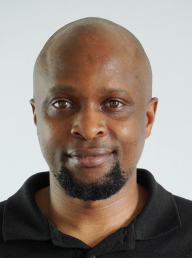MQTT Experts Answer Your Questions - Oct 2021
Watch the Webinar
Chapters
- 00:00:00 - Introduction to the session and the panelists
- 00:03:51 - What are some of the best practices for MQTT Security?
- 00:07:21 - Is the use of self-signed certificates for clients authentication a bad practice? If so what is the right way to do it?
- 00:08:35 - How can we ensure that a client certificate is used from the same machine it was created for initially?
- 00:10:35 - How many concurrent TCP connections are supported by a single broker installed on a single server? Isn't there any limitation by OS?
- 00:13:29 - For HiveMQ Cloud Free plan, what happens when it reaches 100/100? Is there a way I can clear/reset that number? Do the sessions auto-reset monthly?
- 00:16:51 - In regards to capacity handling, would more messages with less payload be better for performance or fewer messages with more payload be better for performance?
- 00:21:59 - What happens if two MQTT clients are sharing the same client ID and try to connect to the broker? Will they send one by one?
- 00:24:50 - What will be the securest way to use credentials on the client-side? For example, javascript on WebSockets (Websites).
- 00:25:49 - For high availability, does the MQTT protocol support a redundant broker system? what is the limit of connections on a broker? Does it depend on PC SPECS or the version of MQTT?
- 00:30:53 - What are the top two MQTT uses cases in the Industry 4.0 scenario?
- 00:35:34 - MQTT for Home Automation System scenario-based question. We have BLE devices connected to our local controller via BLE and the controller is running a local broker, the mobile phones are connected to this controller via the local broker to send and receive MQTT messages. The controller is forwarding local notifications to the cloud so whoever is connected to the cloud can also send/receive messages. Is this correct architecture or we are not following standard practice?
- 00:40:12 - How many brokers can be clustered? And how can we implement distributed server for handling multiple MQTT clients to prevent a blackout, if we depend on a single server? Do we need to geographically distribute them?
- 00:44:14 - Scenario-based question: In a current project, the current consideration is to lower the current Keepalive from 240 seconds to 960 seconds (in order to save energy of the device, as the developers say that the Ping every 4 minutes is too expensive). I currently don't see a disadvantage for this. Am I overlooking something?
- 00:47:42 - In the case of PLC in Industry 4.0, is there an alternative way to create a JSON message that encapsulates all tags on the PLC?
- 00:50:31 - How do I migrate if I'm using a different message broker. For example, IBM MQ?
- 00:52:40 - For integrating the MQTT broker to SCADA software, if the SCADA software doesn't support the MQTT protocol, is there any solution for integrating the broker to SCADA via OPC UA protocol?
- 00:54:40 - Are there any differences in the sense of reliability and scalability between the MQTT versions or is it related to the broker?
- 00:56:54 - What are the best ways to connect MQTT to Kafka that preserve a good performance and simple implementation?
- 00:58:23 - When an MQTT message can’t be delivered to the destination, how long does the MQTT broker keep the message?
- 00:59:28 - Scenario-based question: we provide 3D digital twins of industrial engineering and would like to integrate MQTT data into our 3D immersive solutions, how easy can this be done?
Webinar Overview
Drawing upon the success of our previous ‘Ask Me Anything About MQTT' webinar and on popular demand, this is another edition to answer your most pressing questions around MQTT protocol, MQTT Sparkplug specification, and IoT architecture.
Dominik Obermaier, CTO and Co-Founder at HiveMQ, Florian Raschbichler, Head of Support at HiveMQ, and Kudzai Manditereza, Technology Communicator & Founder of Industry40.tv, will personally answer all your questions live during the webinar.
Feel free to ask questions on the HiveMQ Community Forum.

Dominik Obermaier
Dominik Obermaier is CTO and co-founder of HiveMQ. He is a member of the OASIS Technical Committee and is part of the standardization committee for MQTT 3.1.1 and MQTT 5. He is the co-author of the book “The Technical Foundations of IoT” and a frequent speaker on IoT, MQTT, and messaging.


Kudzai Manditereza
Kudzai is a tech influencer and electronic engineer based in Germany. As a Sr. Industry Solutions Advocate at HiveMQ, he helps developers and architects adopt MQTT, Unified Namespace (UNS), IIoT solutions, and HiveMQ for their IIoT projects. Kudzai runs a popular YouTube channel focused on IIoT and Smart Manufacturing technologies and he has been recognized as one of the Top 100 global influencers talking about Industry 4.0 online.
